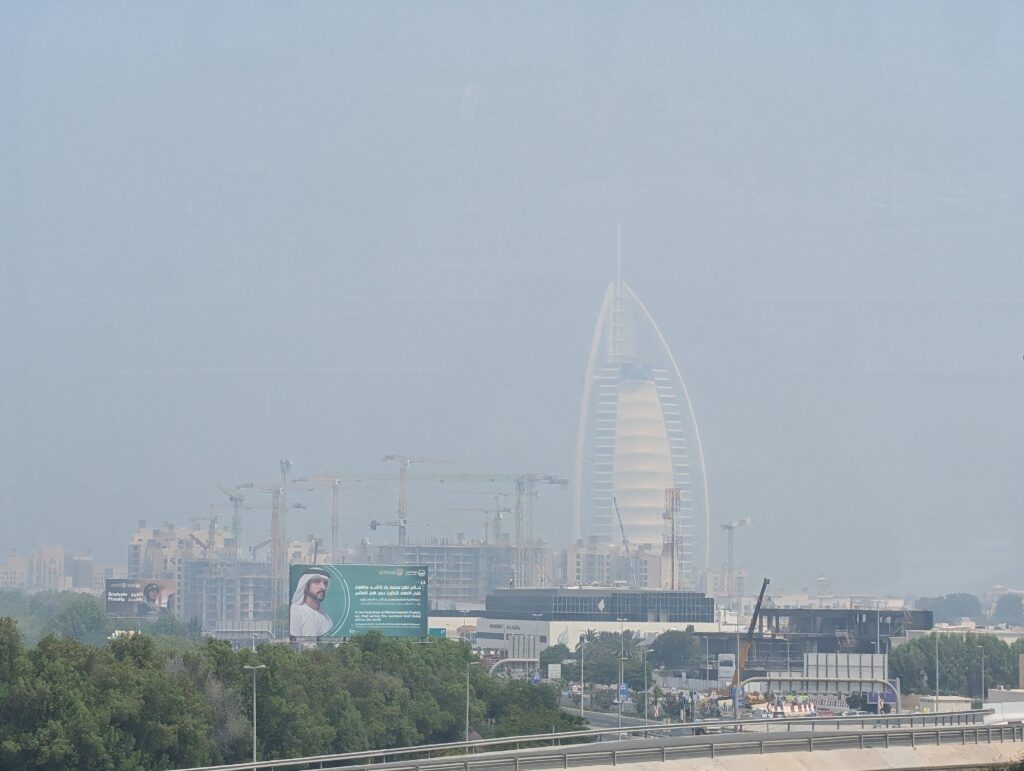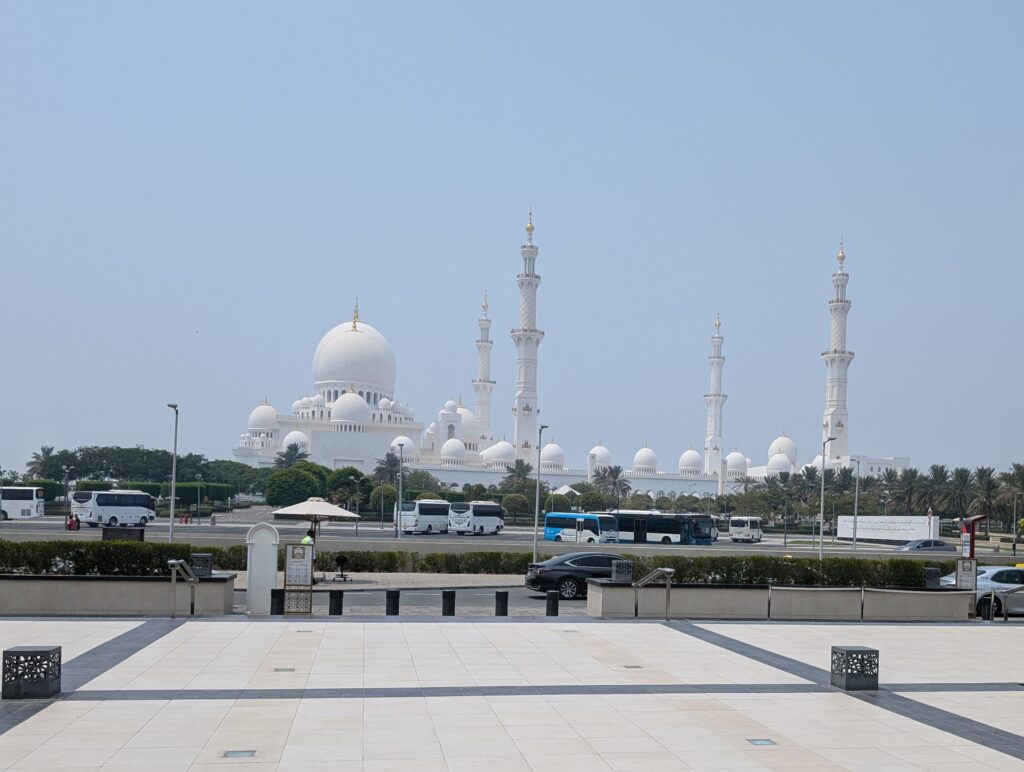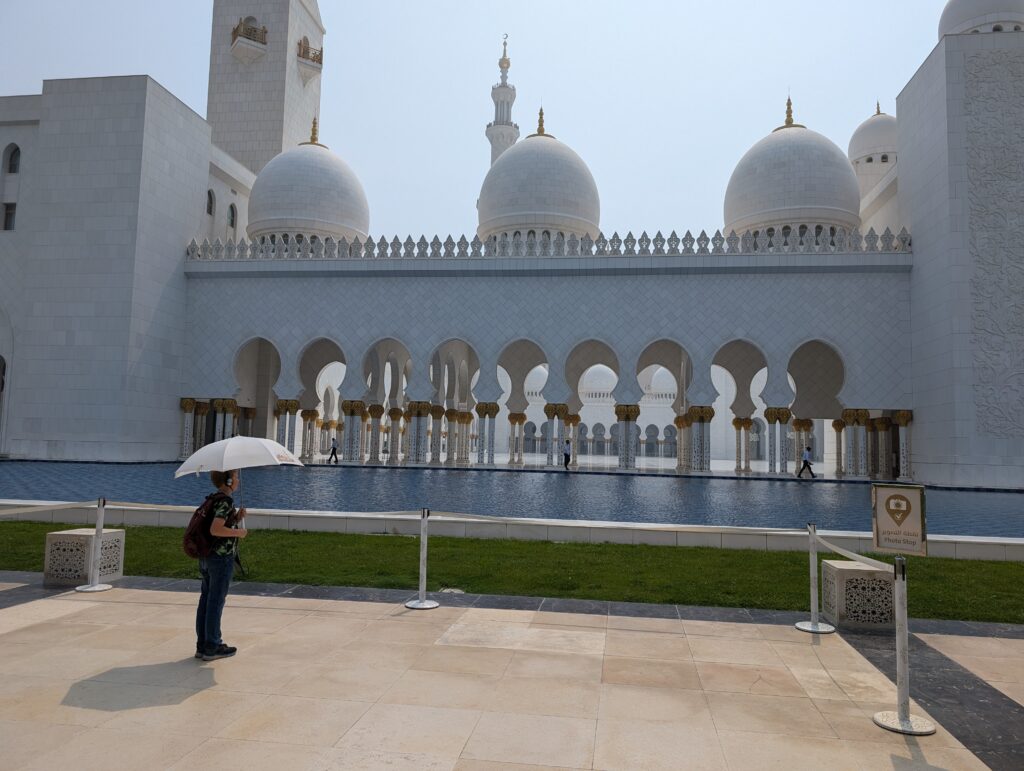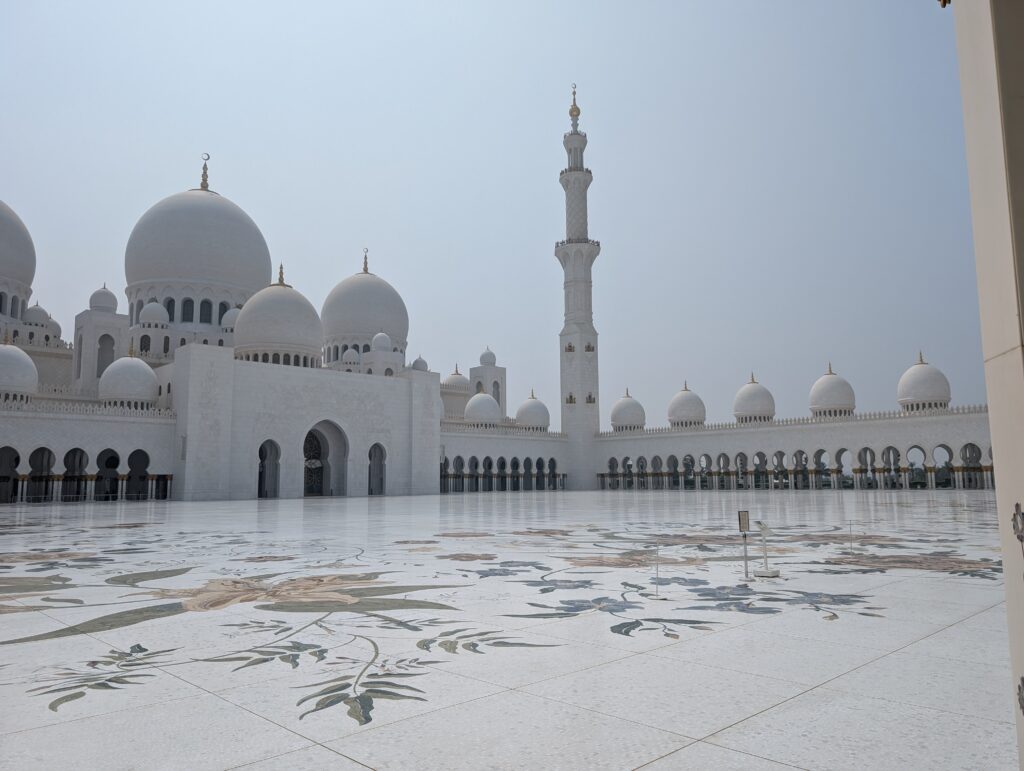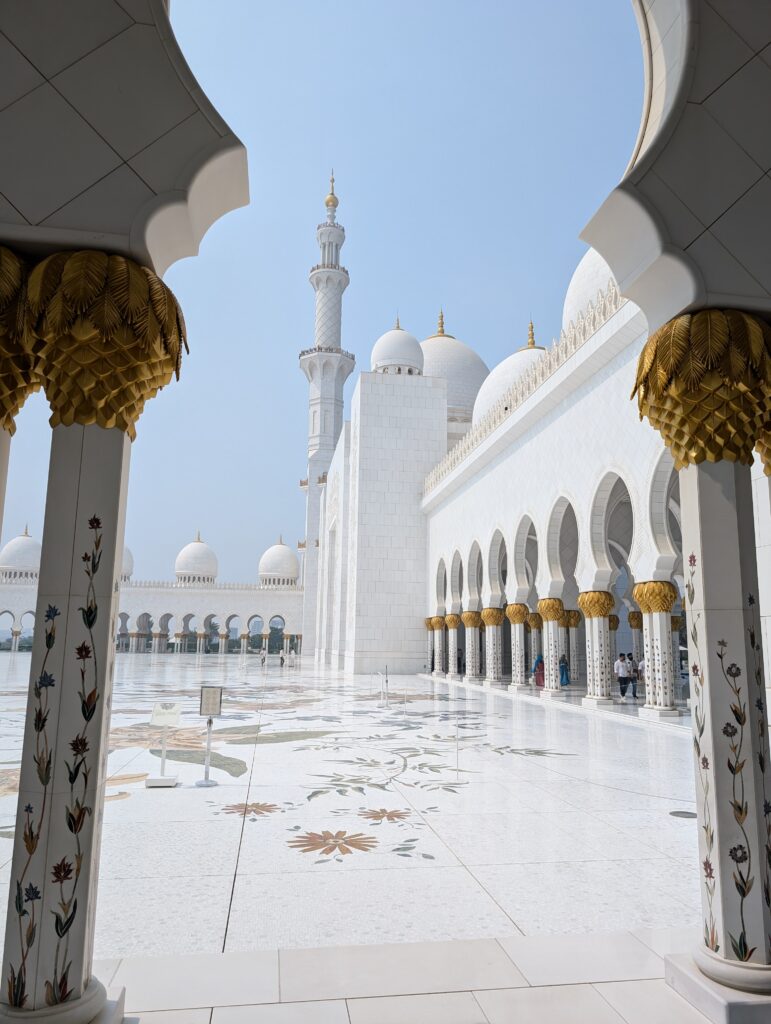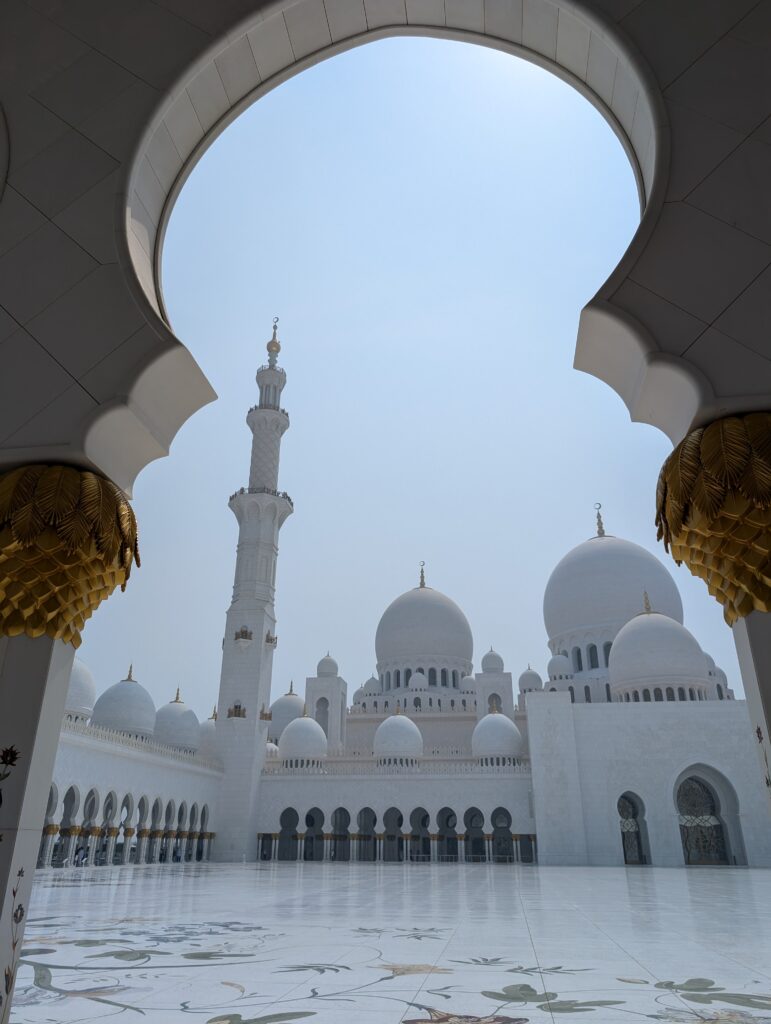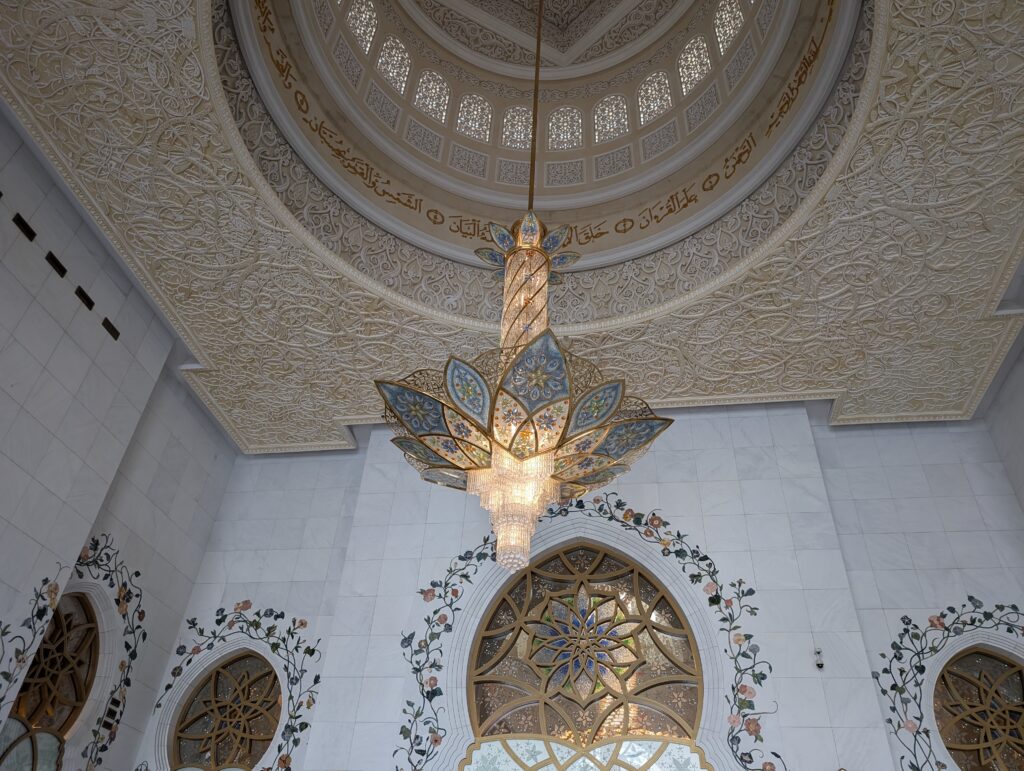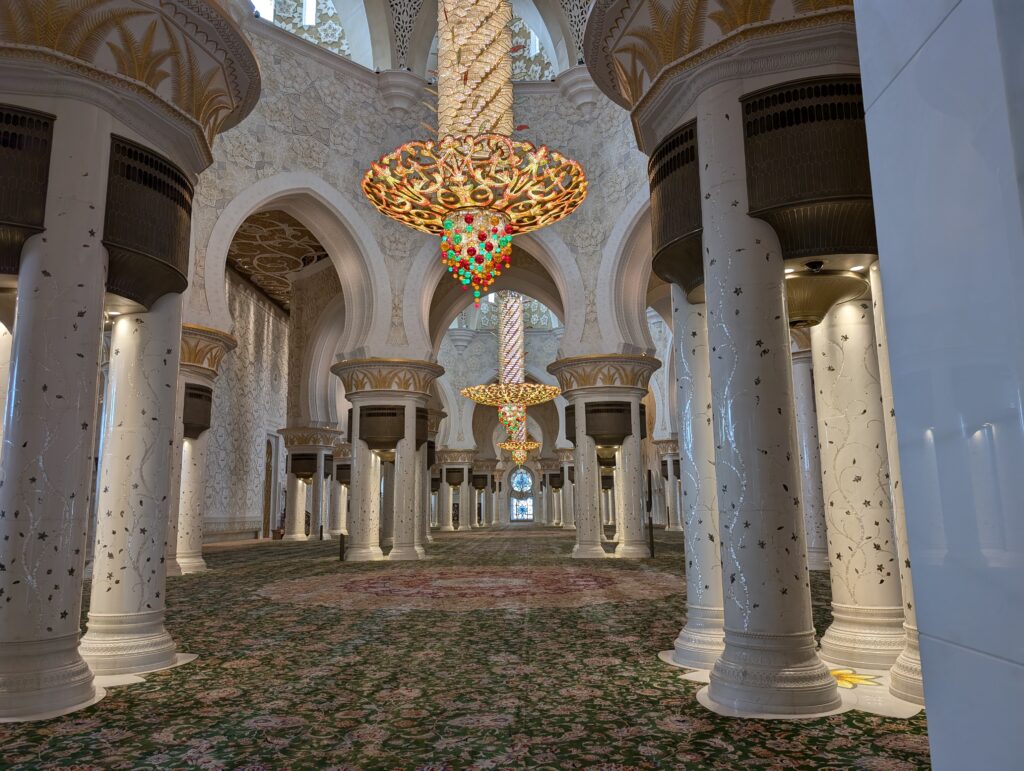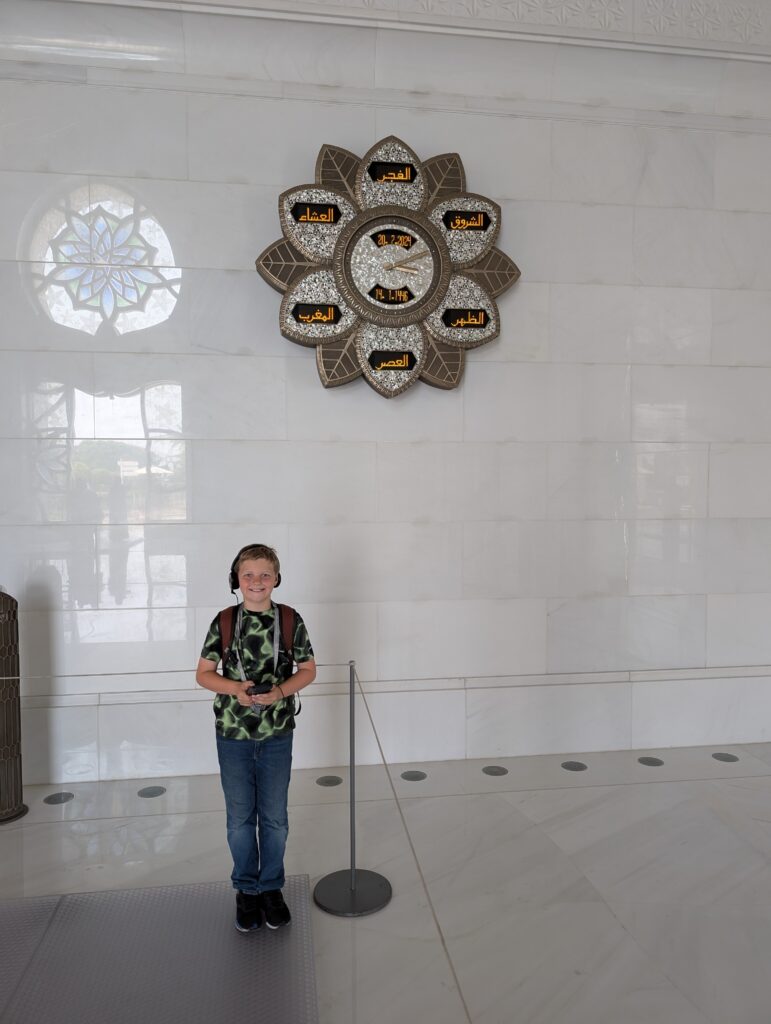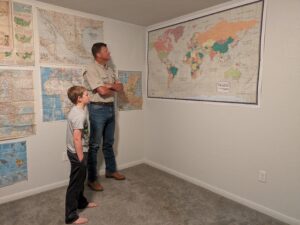United Arab Emirates
"We're Number One"
Most of us have at least one friend or acquaintance who is a master of one upmanship. If they hear you caught a fish, they will have caught a bigger one. If they see you got a sports car, they will have had a faster one. They always have a story – or sometimes an actual feat – bigger or better than yours. This eccentricity is not necessarily about the pursuit of high achievement, it is about everything being a contest. If you can grin at the eccentricity rather than being annoyed or drawn in by it, the relationship can still be a good one. That’s Dubai in a nutshell.
Dubai is not a historic city. It isn’t even very old. It does, however, have the tallest building in the world. It also has the longest driverless metro, the most megatall sky scrapers (buildings over 300m), the largest chocolate mosaic, the tallest hotel, largest picture frame, highest infinity pool, longest gold chain, largest indoor ski resort, deepest swimming pool, largest indoor theme park, largest flower arrangement, and many other world records that I have forgotten.
In We Came, We Saw, We Left, Charlie Wheelan describes Dubai as the love child of Las Vegas and Saudi Arabia. That is a good description. There are some Islamic laws and restrictions. They have a women’s only car in the metro, which you cannot eat or even drink water on. But Westerners are not looked down upon for not covering their knees or elbows in most non-religious buildings. On the whole, though, I would say it has more in common with Vegas than Saudi; except that if Las Vegas were Marilyn Monroe, Dubai wants to be Jayne Mansfield.
One superlative Dubai achieves without trying. It is the hottest feeling place I have ever been. Daytime temperatures during our stay were in the low to mid 100s. It sometimes reaches those temps in Texas and the San Joaquin Valley. In Dubai, though, the humidity was over 60%. That may not seem like a lot, but air that warm can hold a lot of water. Sixty percent humidity is very high for temperatures over 100. My phone often said the “feels like” temperature was over 130. I didn’t really need the phone to tell me. The heat was ever present. In Texas and especially Central California, the nights at least cool down. Dawn on a hot day in Fresno might still touch the upper 50s. A hot daybreak in West Texas will likely hit at worst the 70s. Daily low temperatures while we were in Dubai never sunk below muggy low 90s, leaving the “feels like” temperature close to 120. It is strange to be in desert places like the UAE or Oman and feel humidity worse than Houston, or even some tropical destination.
Fortunately, every building in Dubai has air conditioning. Outdoor bus stops are air conditioned. The metros and buses are air conditioned. Every business is air conditioned. They even have half mile long air conditioned tunnels leading from the metro to the Dubai Mall and the Burj Khalifa. This is absolutely necessary, because a half mile hike in those conditions would leave you in a lathery pool of perspiration. I know. I spent 2 hours wandering outside searching for FedEx locations what were not where Google Maps said they would be. My jeans looked as if I had gone for a swim. I suppose it would not be so bad visiting some other time of the year. Dubai’s location right on the Tropic of Cancer exacerbates this heat and humidity problem in the summer. For now, though, the value of a Dubai hotel directly corresponds to its nearness to air conditioned transportation.
(Continued)
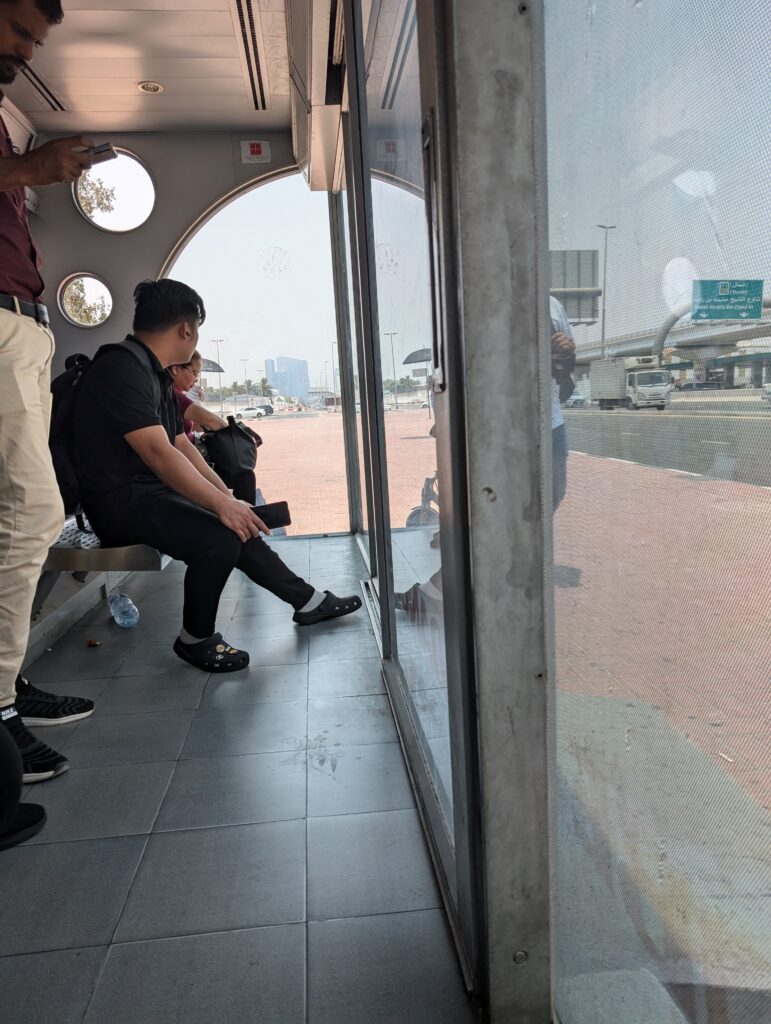
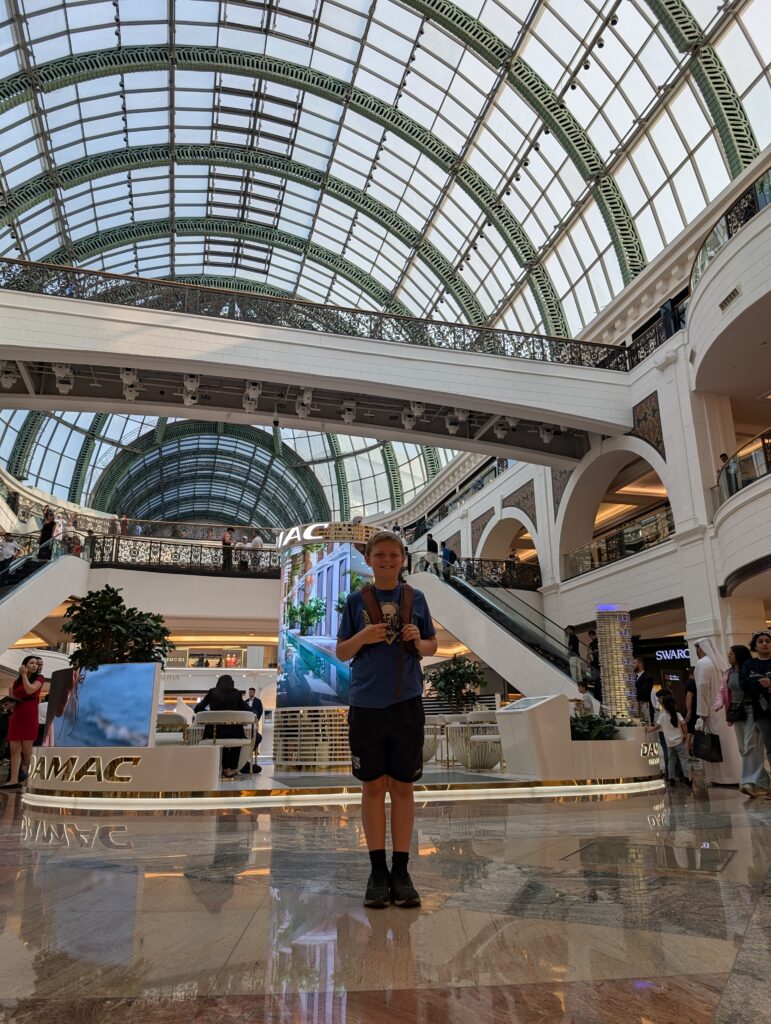
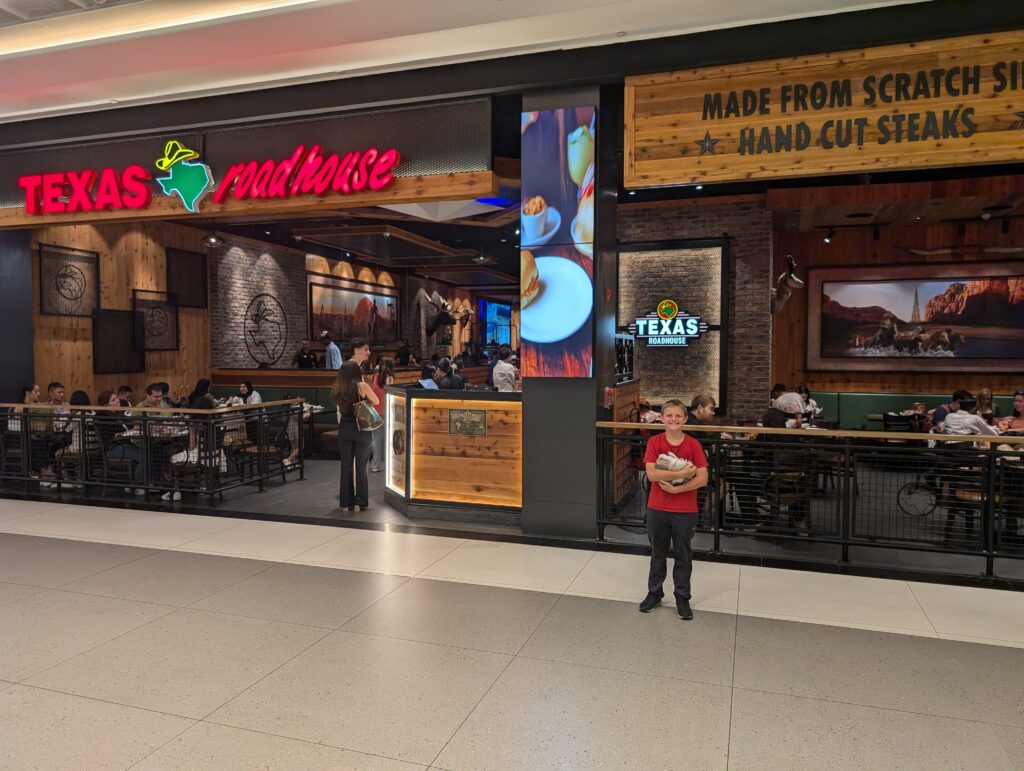

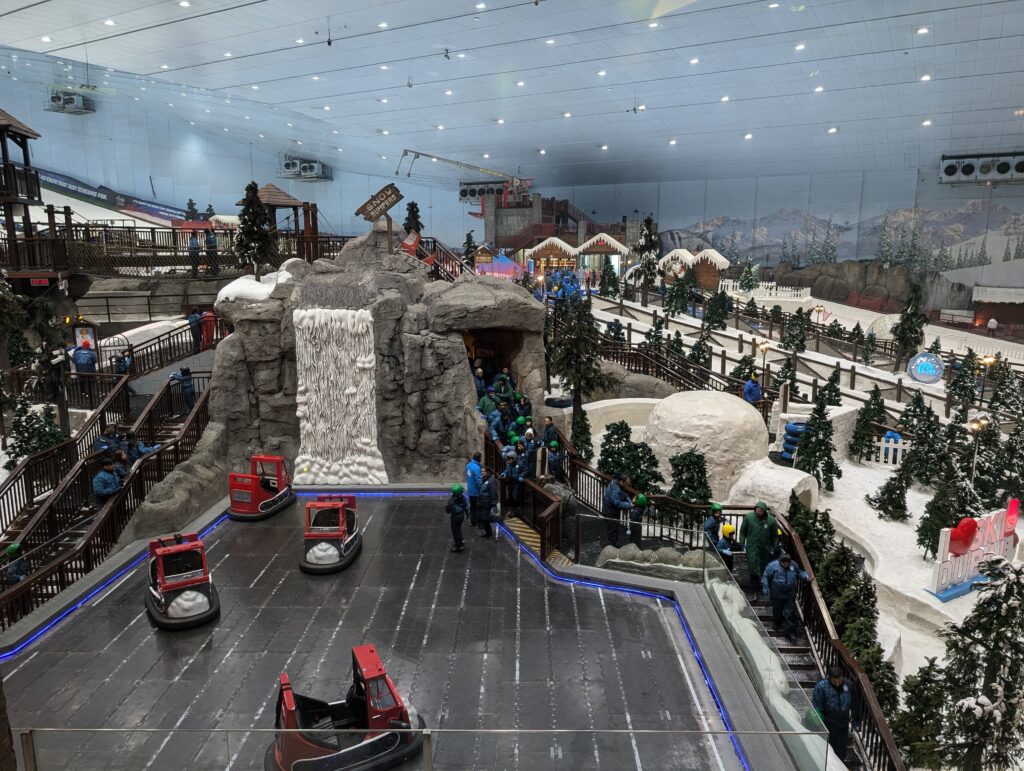
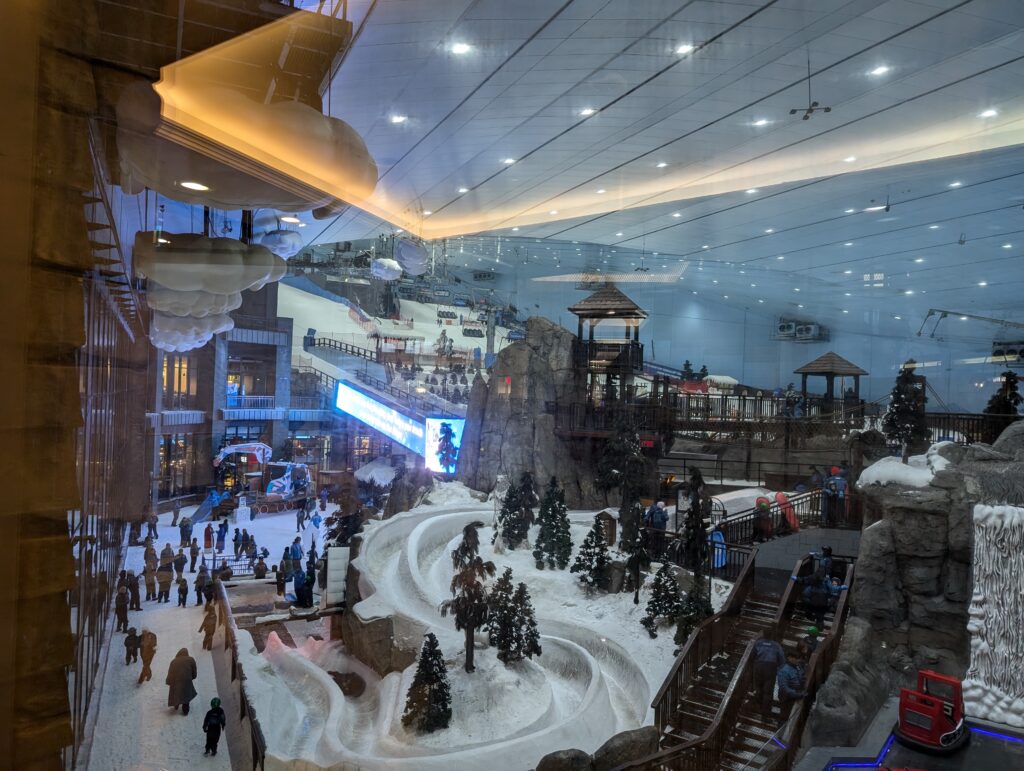
Caleb and I arrived at the main Dubai airport and never experienced the heat until we emerged from the metro station for our 300 meter walk to the motel. That wasn’t close enough to avoid sweating. We stayed at what was once a very nice hotel. It was clearly dated, but worked plenty well for our purposes. We just needed a cool camping spot to explore from. We stayed in the Deira neighborhood, which is less expensive than the more recently developed parts of Dubai. Our hotel seemed to cater primarily to Indians. The neighborhood had mostly Indian, Pakistani, and African residents. Nearly all of the capital that fuels Dubai’s massive development comes from energy extraction. Enough revenue is generated from this to build an amazing city and the accompanying service industries. What the Emirates have in natural resources, though, they lack in human resources. So people with less economic opportunity on this side of the world flock to Dubai to work and earn. Caleb and I stayed with these folks and their visitors.
After spending much of the early afternoon failing to find a FedEx location to ship my jacket and a few souvenirs home, we showered off and took the metro down to the Dubai Mall. I found it odd that Caleb had developed such an affinity for malls. He does not like expensive or high fashion merchandise, and it isn’t like malls are the only air conditioned venues in the city. At his behest, though, we spent some time in the Baku mall, and now the Dubai Mall and later the Mall of the Emirates. They are huge, maze-like shopping structures with lots of peripheral entertainment. The Mall of the Emirates even has an indoor ski resort, complete with ski lift, hill, bobsled track, and zip lines. One mall has a zoo, another an indoor amusement park. They all have movie theaters. All of these things come at a cost, however. The mall we visited had a Breitling watch store. The already eye-waterlingly expensive Breitlings were even less affordable here. We nostalgically decided to eat at Texas Roadhouse, which was more than twice what it costs to eat there in Lubbock. We did hear some country music, though, which was nice.
It was actually my idea to eat at Texas Roadhouse. I hadn’t had a steak for so long, it was calling me. Caleb, having taken to heart my own oft-repeated advice, suggested we find some authentic local food. I told him that there really wasn’t anything authentic about Dubai. If there was any place where an American meal would not impede our cultural experience, it would be in Dubai. A couple of days later we would even grab burgers at McDonald’s, something I do not usually even do at home. I really have enjoyed the trip, and often wish it were longer so I could more thoroughly experience all of the places we are visiting. But for the first time in a long time, I sat in Texas Roadhouse feeling nostalgic for West Texas, anticipating the upcoming autumn in Lubbock and Spur with their college and high school football games, thinking about cotton harvest, feeling the cool early morning air as I ride my bike down the Farm to Market Roads. I hadn’t ridden a bike for eight weeks. I’ve been gone so long, I need a second hair cut. I think I will wait on that until I am out of Dubai…
We decided we would use one day to visit city sites in Dubai, and make a day trip to Abu Dhabi on the second day. We went coin shopping on our morning in Dubai. Caleb wanted to make another visit to a mall, so he looked at toys and games while I checked out the indoor ski resort. I didn’t go in it, but observed from the windows. Several restaurants also offer views. Everything except our room in Dubai was expensive. We opted out of most of the non-unique experiences like going to a zoo or an amusement park. We had a nice Arabic meal, which included delicious Fatteh Shrimp and Warak Enab, which is their version of dolma. I did shell out $200 to take the elevator up to the VIP floor on the Burj Khalifa. You get to the Burj through the Dubai Mall, which we had already seen the day before. There is also a huge lighted outdoor fountain display that puts on a show set to different music every half hour. We stopped to see this on the way to the Burj.
The Burj Khalifa is the tallest building in the world. Most people visit the 125th floor, which costs a bit less. Those tickets were sold out, so we went to the 148th floor, which was a better experience, anyway. The building has 163 floors, but this is the highest publicly accessible observation deck. It was far less crowded and there were date desserts and free juices and soft drinks to accompany our fantastic views of the hazy Dubai skyline. Night fell while we were there. It was a bit more difficult to see the Gulf in the haze, but we had a better view of the city lights. Occasionally, clouds passed beneath us. We spent two hours up there. We saw the fountain show again from above. We watched people grab selfies, then leave. We read all about the construction of the building and all of its records. The building is 828 meters tall, for instance. Each of its windows weighs 362 kilograms (about 800 lbs) and they have to be washed by a crew with squeegees. The elevator is the fastest in the world. Our ears popped going up and down it.
I felt a little bit ashamed to have spent so much money just to go to the top of a building. It was the Burj Khalifa, though. It would be a bigger shame, I suppose, to have gone halfway around the world and not ascended the world’s tallest building. It was fun, and I am glad the cheaper tickets were sold out.
(Continued)
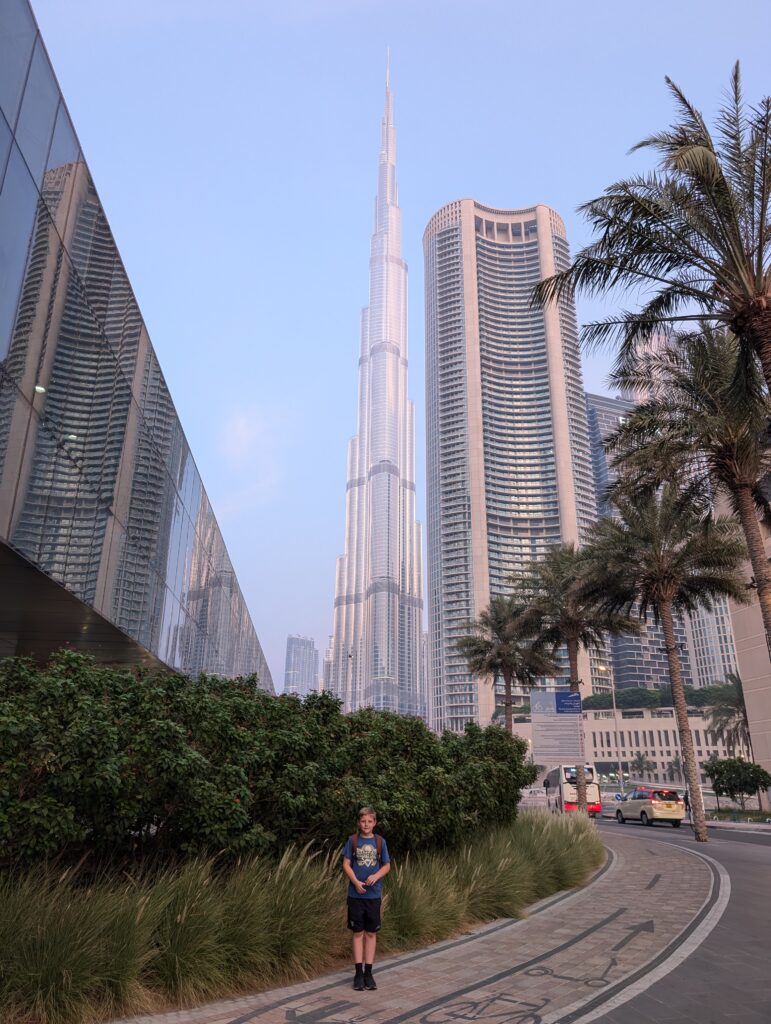
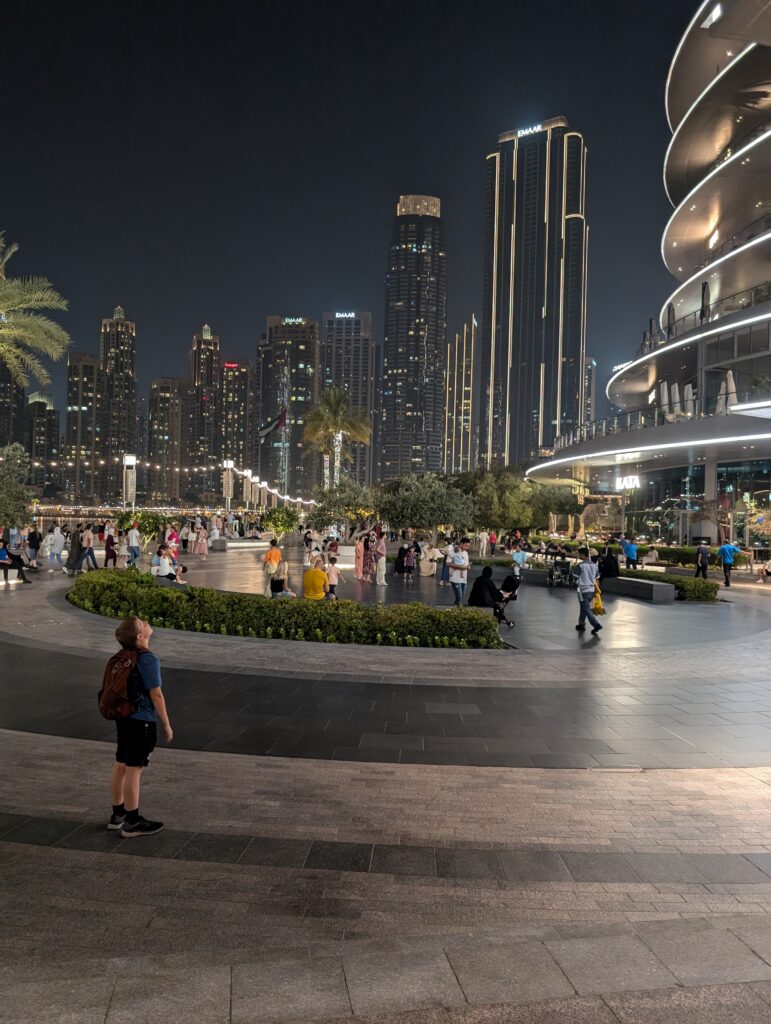

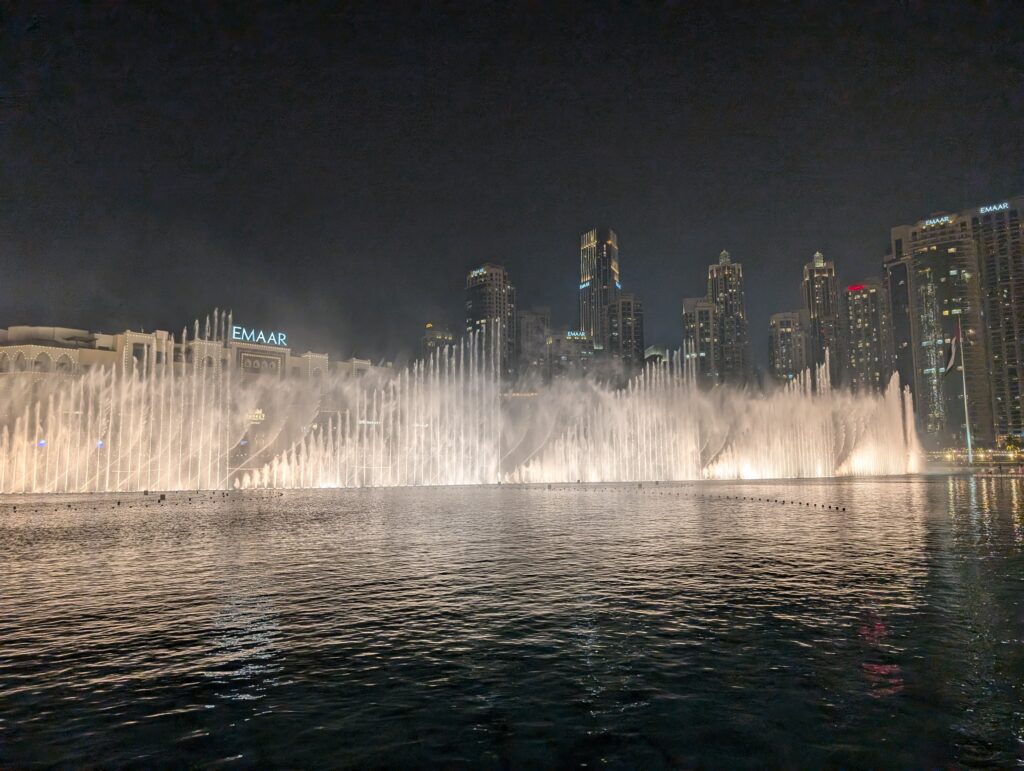
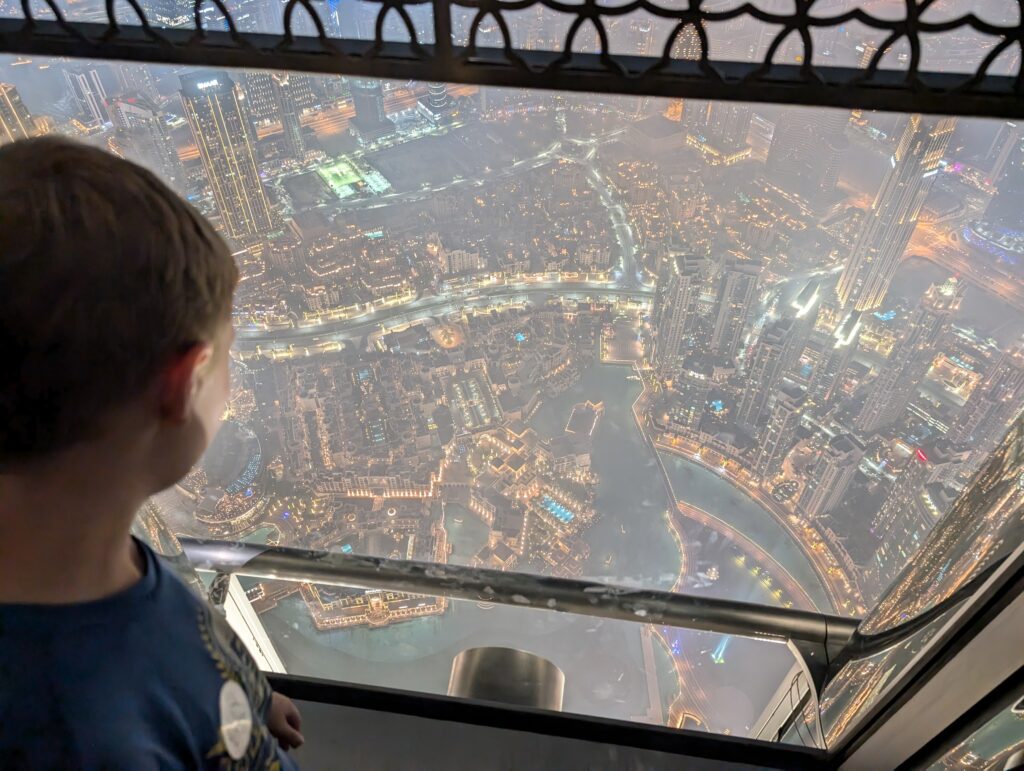
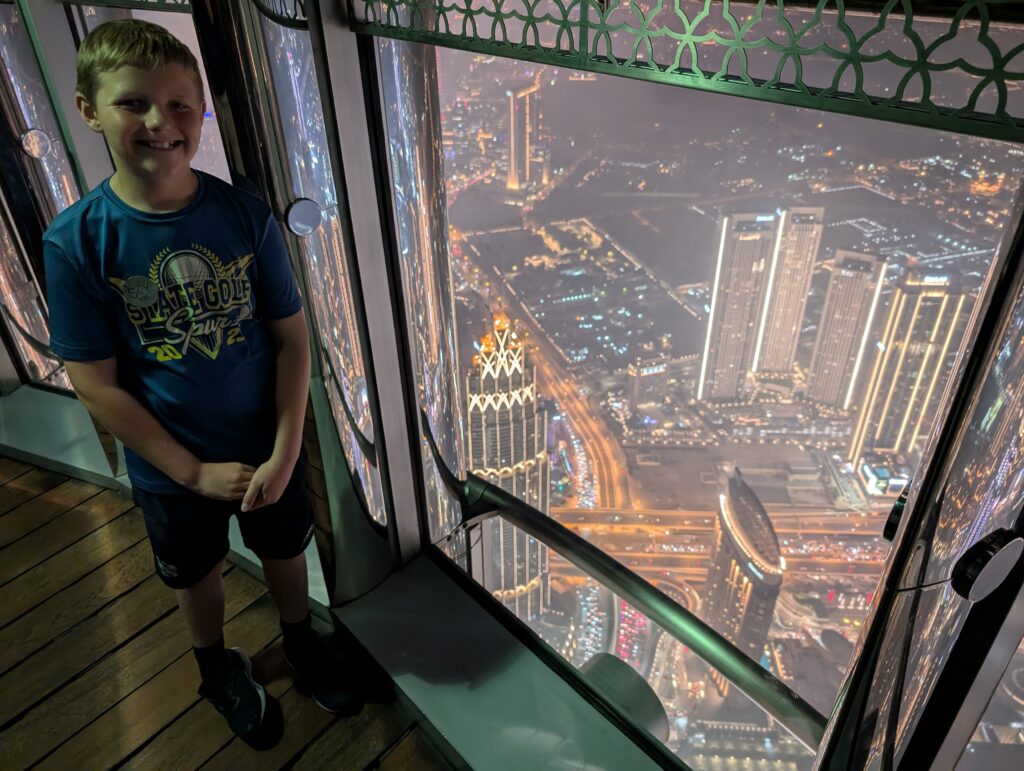
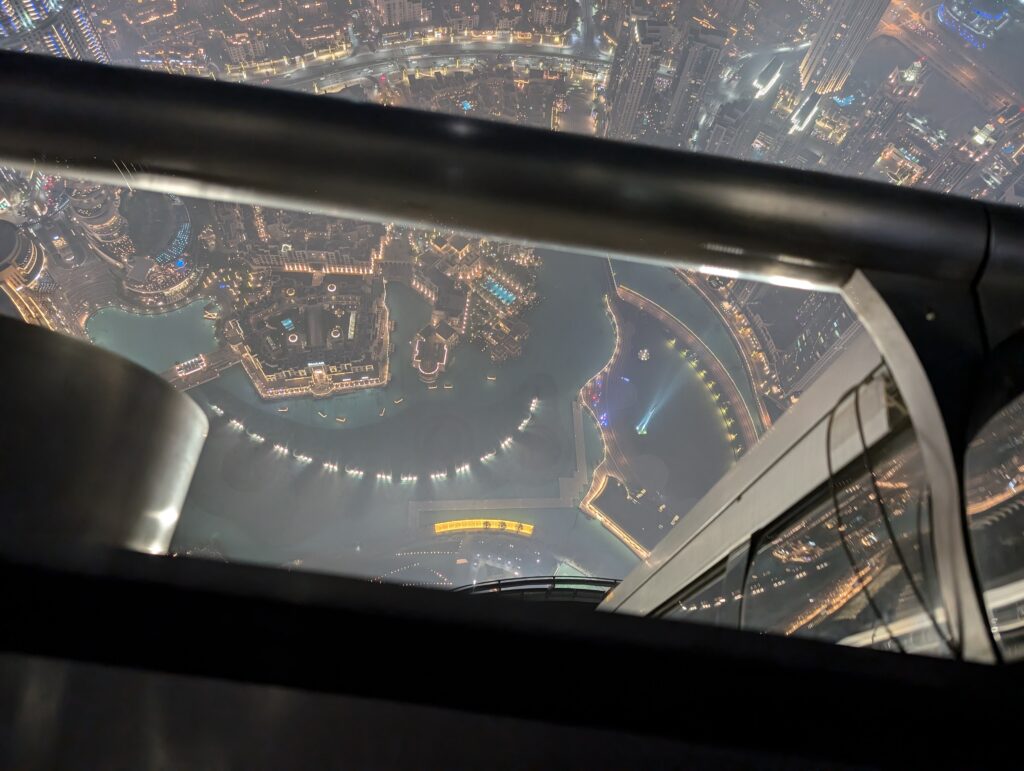
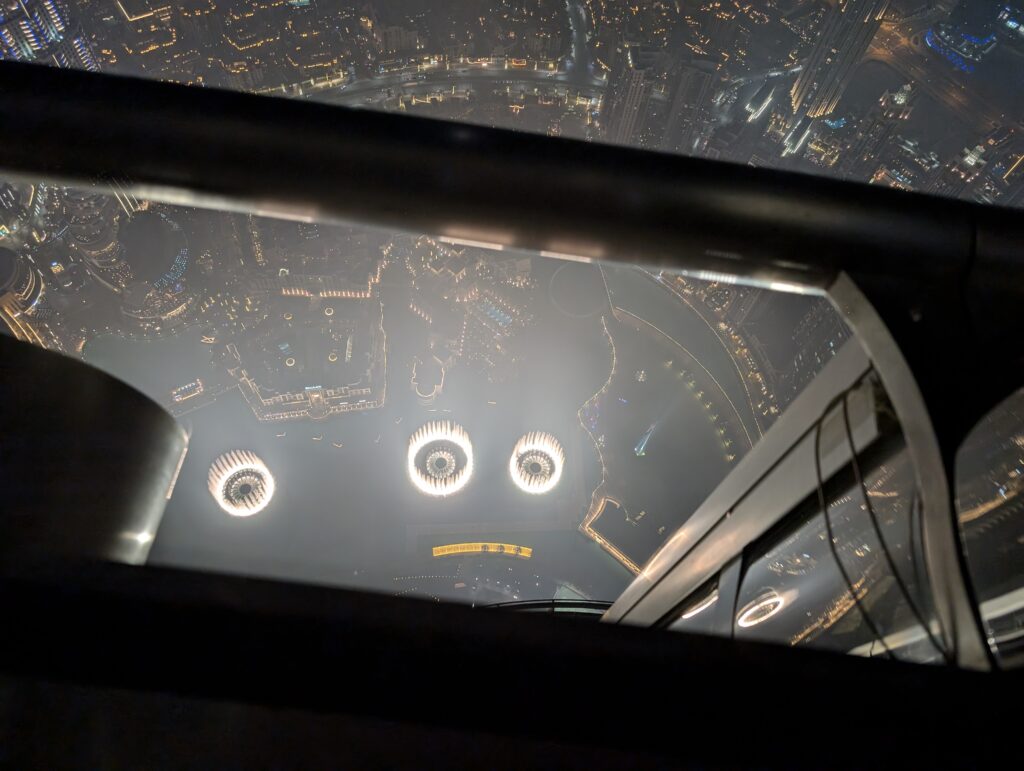
We were out late at the Burj and got a correspondingly late start the next morning. We made our way to Abu Dhabi and back using all metros and city buses, covering a distance of 150km (over 90 miles). It took three hours, but only cost about $20 each round trip. Abu Dhabi is still a wealthy, well developed city. It is a bit more conservative, and doesn’t have Dubai’s sense of one upmanship. It only has the third largest mosque in the world. That is what we visited, the Sheikh Zayed Grand Mosque. Zayed was kind of a founder of the United Arab Emirates. He was a noted leader and philanthropist. One of his projects was building this massive mosque. Zayed passed away in 2004, so his memory is still recent.
In the 19th century, there were seven sheikdoms along this part of the Arabian peninsular coast. Historically, they had been fishing villages; kind of a remote part of an area ruled by Oman or occupied by Portuguese merchants. The 19th century sheikdoms were known as the Trucial States due to truce agreements they made with the British, essentially making them British protectorates. The British gradually devolved their global empire in the decades following the second world war. In the late 1960s, they announced their plans to withdraw troops from the area. The treaties were dissolved, but aggressive neighbors lurked the area. The sheikdoms entered negotiations – which originally included Qatar and Bahrain – to form a federation. Pressure to join mounted when Iran captured several islands as soon as the British left. All seven emirates eventually joined, but Qatar and Bahrain opted not to, setting the boundaries of the modern United Arab Emirates. Zayed was the chief architect behind the union and the generally progressive strategy of the UAE.
The mosque he built is not only huge, but was planned in intricate detail. Zayed was a lover of the color white. As such, white marble dominates the construction. There are blue reflection pools, and stunning blue tiles. Unlike the Turkish mosques, where all gold had been removed for lack of public trust, the Zayed mosque features 24 karat gold layering throughout and is encrusted with semi-precious stones. The chandeliers are gigantic, stunning, and almost sexual in appearance. I was intrigued by the clocks. In several places, there were flower shaped digital clocks indicating the five daily times for Muslim prayers. I also appreciated the fact that visiting the mosque was free. We paid only for media guides, which were a bit on the propagandistic side, but gave a lot of good information on the construction of the mosque and explained a lot about Zayed’s vision for the UAE, and how he wanted to be remembered.
We spent another hour taking the bus back over toward the public beach. It was clean, and not crowded at all. The sand had even been gone over by machines for cleanliness and texture. I figured it would be fine to swim here. Caleb spent entire days in Bulgaria in the water. Here, even the gulf water is hot tub warm – in the mid 90s. I correctly guessed that a short dip would be all he wanted. We waded out into the gulf after changing in a meticulously clean public changing room. They do ask that both men and women keep their knees and shoulders covered. Wearing shorts to swim is generally winked at, but they aren’t going to let you go shirtless. It helped the heat situation a little to have a wet shirt. It was not a refreshing swim, but it replaced body salts with sea salts, and I rinsed them all away when we got out. We took the bus and metro back to our motel to prepare for our early morning jump to Muscat, Oman.
My impression was brief, but I think I like Abu Dhabi better than Dubai. Although Oman will be about as hot, I am anxious to go somewhere that feels a bit more authentic. Oman will probably be a step in that direction.
